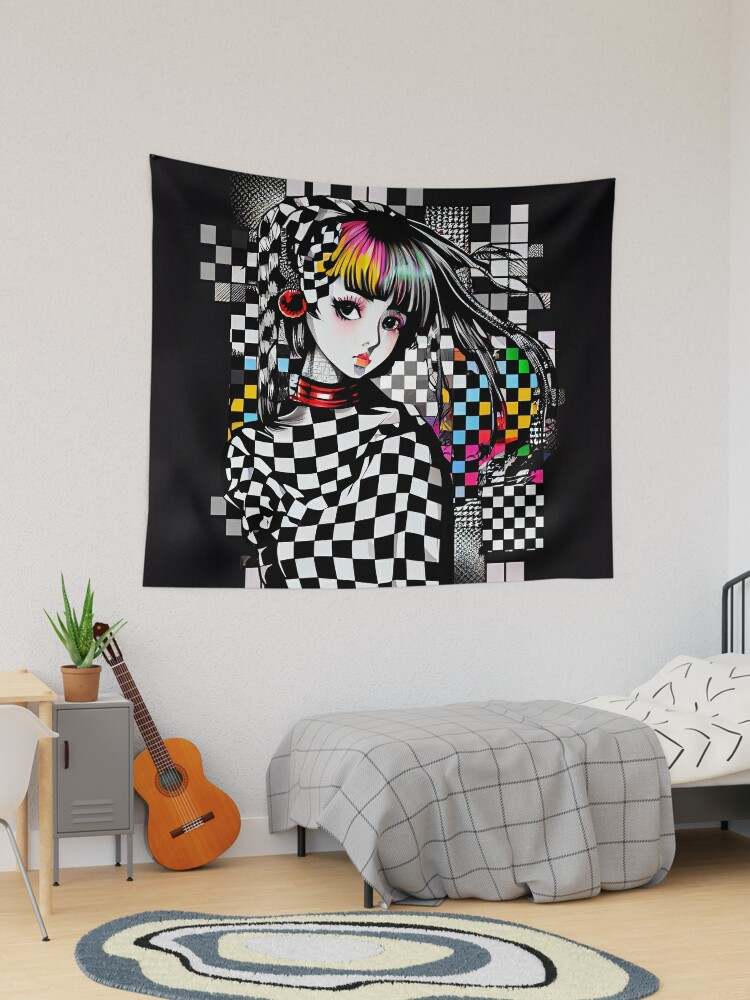Monochrome Magic: Weaving Stories with Black and White Tapestries

In a world awash with vibrant colors, the beauty of black and white tapestries stands out like a breath of fresh air. These monochrome creations offer a unique way to express art and storytelling, capturing the essence of a moment or emotion without the distraction of hues. Each piece is a testament to the skill and creativity of the weaver, drawing the eye to intricate patterns and designs that tell tales beyond words.
Black and white tapestries have a timeless quality, evoking feelings of nostalgia and elegance. They can transform a space, adding depth and character while inviting viewers to engage with their stories. Whether displayed in a modern loft or a cozy traditional home, these tapestries serve as striking focal points, marrying simplicity with complexity in a mesmerizing dance of light and shadow.
The Art of Black and White Tapestry
Black and white tapestry is a captivating form of textile art that transcends mere decoration. It encompasses a rich tradition that combines storytelling, cultural expression, and artistic craftsmanship. The contrasting colors create a striking visual impact, allowing artists to play with patterns, textures, and intricate designs. This art form often speaks to the viewer's emotions and experiences, invoking a sense of nostalgia and contemplation.
The use of black and white in tapestry allows for a unique exploration of themes and ideas. The absence of color encourages a focus on form, line, and composition. Many artists use this limited palette to convey complex narratives, exploring concepts such as duality, balance, and the interplay of light and shadow. The simplicity of black and white can elevate the narrative, making intricate designs stand out while inviting various interpretations from the audience.
Moreover, black and white tapestries are versatile and can complement a wide range of interior styles. Whether hung in a modern loft, a traditional home, or an artistic studio, these tapestries add depth and character. Their timeless quality ensures that they resonate with diverse audiences, making them not just decorative items, but also meaningful pieces of art that contribute to the storytelling of spaces.

Historical Significance
The roots of black and white tapestry can be traced back to ancient civilizations, where artisans used contrasting colors to create striking visual narratives. In cultures such as the Egyptians and Greeks, textiles held great significance, serving as both decorative and functional items. The use of black and white in these early tapestries often symbolized dualities such as life and death, light and dark, and the celestial vs. the terrestrial. This interplay between colors allowed communities to express profound philosophical concepts through their art.
During the medieval period, black and white tapestries flourished in Europe, especially in the regions of France and Flanders. These textiles became a popular medium for storytelling, depicting scenes from mythology, historical events, and daily life. The high contrast of black and white not only made the images bold and dynamic but also lent an air of elegance and sophistication to the interiors of castles and manor houses. The ability to combine these simple colors in intricate designs showcased the weavers' craftsmanship and their understanding of visual storytelling.
The 20th century saw a revival of interest in black and white tapestry, as modern artists began to explore the medium in innovative ways. Movements such as minimalism and abstract expressionism influenced artists to embrace the simplicity of monochrome design, utilizing black and white to convey complex emotions and concepts without the distraction of color. This evolution has solidified black and white tapestries as significant artistic expressions that continue to captivate audiences, reminding us of the enduring power of contrasting hues in storytelling.
Design Inspirations
Black and white tapestries offer a unique canvas for artistic expression, contrasting the simplicity of monochrome against the complexity of intricate designs. Artists drawing inspiration from nature often depict scenes where shadows and light dance together, creating a compelling narrative of balance and harmony. The elegance of a floral motif rendered in black and white can evoke a sense of timeless beauty, allowing the viewer to appreciate the intricate details without the distraction of color.
Geometric patterns also lend themselves beautifully to black and white tapestries, where sharp lines and shapes create a visual rhythm that is both modern and classic. Designers often pull from architectural elements, incorporating symmetry and repetition to craft striking tapestries that command attention. This minimalist approach not only enhances the aesthetic appeal but also invites contemplation, encouraging viewers to engage with the forms and structures woven into the fabric.
Cultural influences play a significant role in the design of black and white tapestries, with many pieces reflecting traditional patterns and styles from various regions around the world. These designs often tell stories, incorporating symbols and motifs that capture the essence of heritage and history. By blending these cultural elements into a monochrome tapestry, artists create a dialogue between the past and present, allowing for a rich narrative that resonates with a diverse audience.
